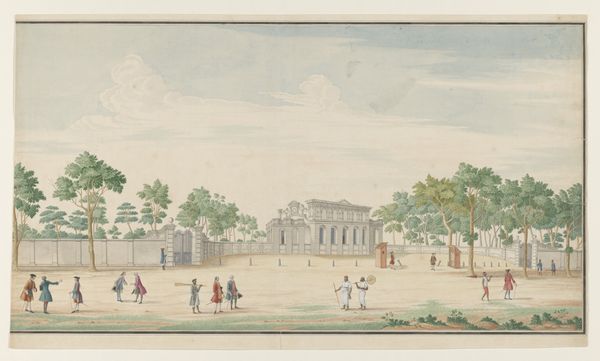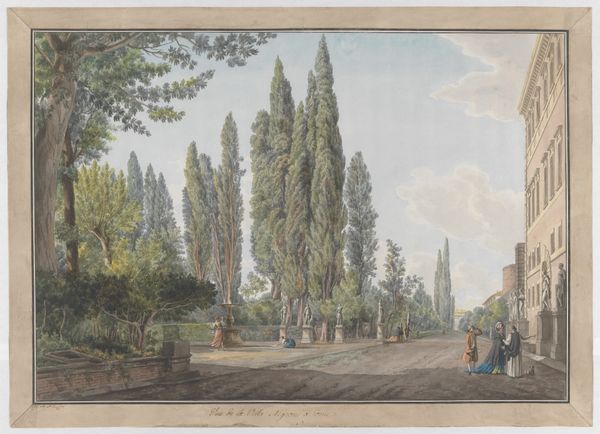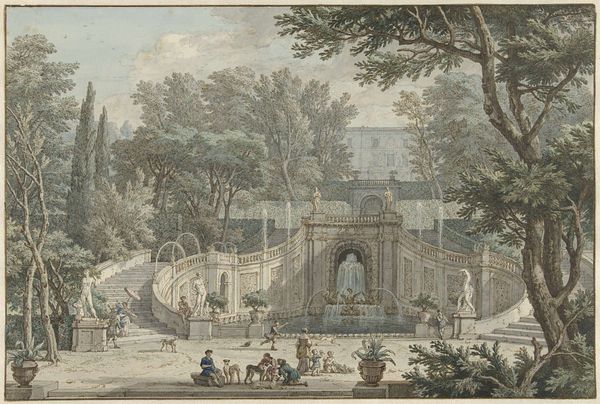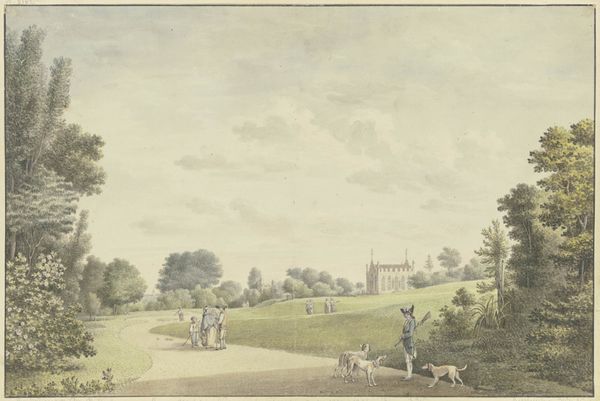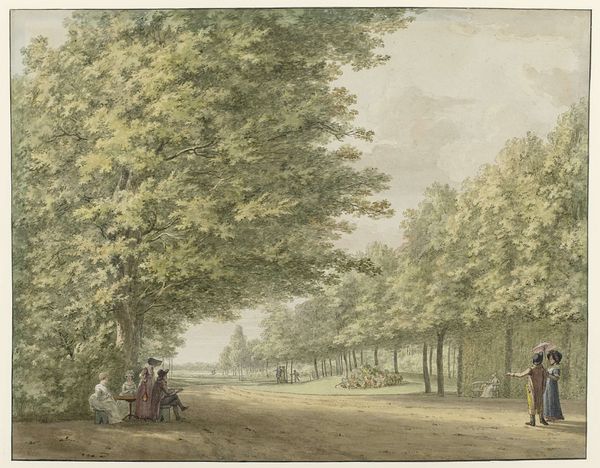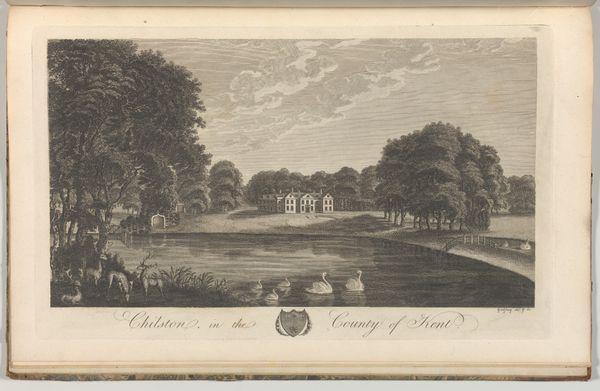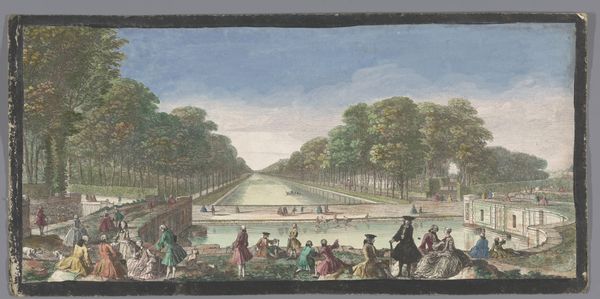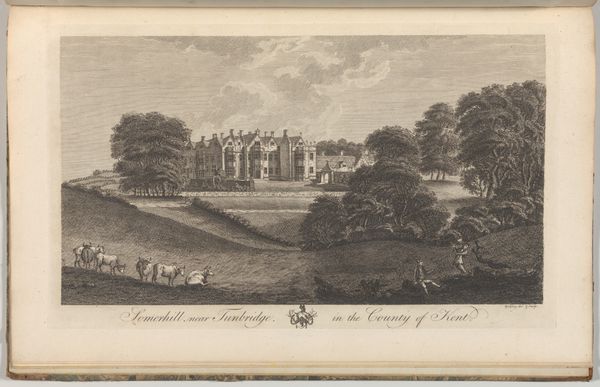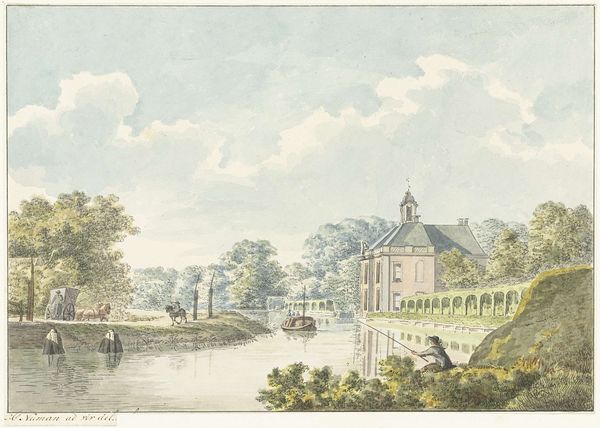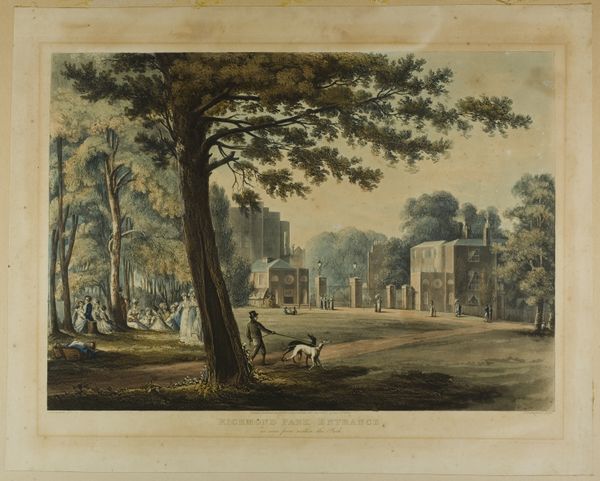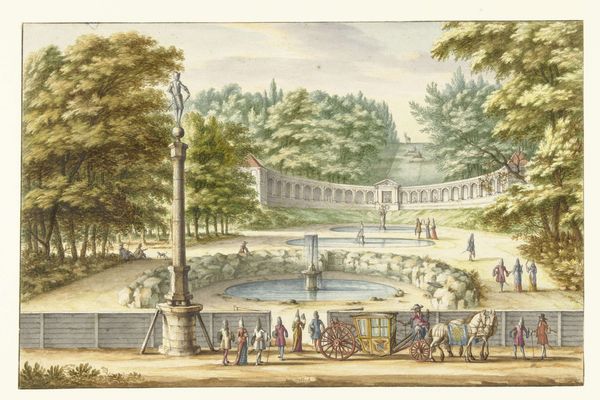
Dimensions: Mat: 23 1/8 × 32 5/16 in. (58.7 × 82 cm) Image: 20 1/4 × 29 5/16 in. (51.5 × 74.5 cm)
Copyright: Public Domain
Editor: This is Giovanni Volpato's "Villa Pamphili," created between 1775 and 1785. It's a print with watercolor and drawing, now at the Metropolitan Museum. The whole scene feels very ordered, almost staged, but there's a subtle, underlying energy in the composition, thanks to the placement of figures and fountains. What do you see in this piece? Curator: First, consider the horizontal divisions—the layered planes defined by the water feature and meticulously rendered architecture—juxtaposed with the softer, organic shapes of the trees. Do you observe how the artist employed watercolor to achieve variations in tonality to delineate the volumes and shadows, achieving aerial perspective? Editor: Yes, the subtle shifts in color definitely create depth and a sense of atmosphere. It’s interesting how the architecture provides a rigid structure and the figures create movement throughout. Curator: Indeed. The balance of line and wash. Note, too, how the linear recession creates spatial depth. Also observe how the print is a formal study in composition and perspective. There’s a dialogue between the geometric architecture and organic growth that permeates this landscape view. Do you notice any underlying geometric patterns? Editor: I see how the arrangement of trees, buildings, and fountains follow precise grid lines. Curator: Precisely. The artist has captured a fleeting moment of idealized nature through meticulously rendered line and subtly gradated washes. Editor: I'm appreciating this artwork a lot more by recognizing its inherent visual tensions and carefully thought-out arrangements. Curator: Exactly, understanding how these formal qualities interact provides a more profound engagement with the artist's work.
Comments
No comments
Be the first to comment and join the conversation on the ultimate creative platform.

